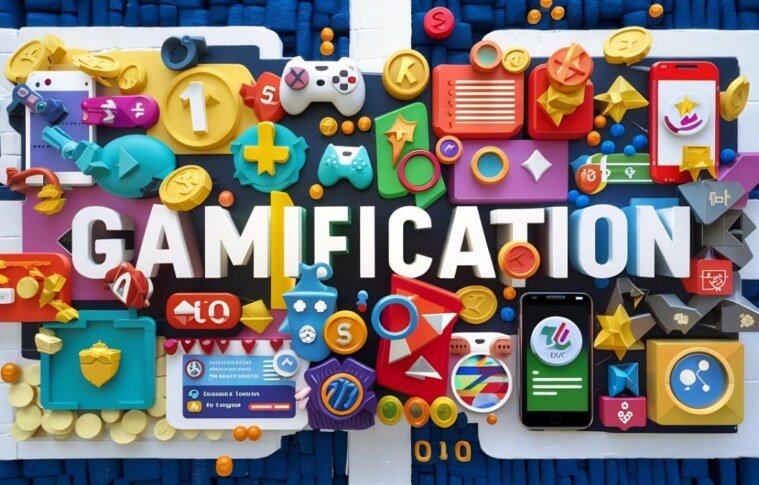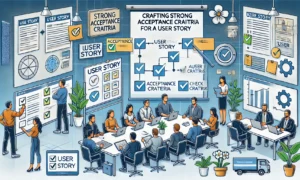Introduction:
In today’s competitive digital landscape, engaging users is crucial for product success. One powerful method for achieving this is gamification—the application of game-design elements in non-game contexts to motivate and enhance user engagement. When done effectively, gamification not only boosts user retention but also transforms users into passionate advocates for the product. In this article, we’ll explore successful gamification strategies and how they can be used to create long-lasting connections between users and brands.
What is Gamification in Product Design?
Gamification refers to the integration of game-like mechanics into a product or service to drive user engagement. These mechanics include elements such as points, badges, levels, leaderboards, challenges, rewards, and progress tracking. While gamification originates from the gaming industry, its principles have been successfully adapted across diverse sectors, including fitness apps, productivity tools, e-commerce platforms, and educational products.
The objective of gamification is to make interactions enjoyable, rewarding, and motivating, which leads to higher levels of user participation, satisfaction, and retention. The key is to foster a sense of achievement and competition while making the experience fun and engaging.
Key Gamification Strategies that Boost User Retention
- Clear Objectives and Progress Tracking
One of the fundamental principles of gamification is setting clear objectives for users. Whether it’s completing a task, achieving a goal, or simply using the product consistently, users are more likely to engage when they know what they are working toward.
By integrating progress bars, completion percentages, or milestone markers, products can provide users with a clear visual representation of their journey. This sense of progression is particularly important because it taps into the intrinsic motivation of users who want to see tangible results from their efforts.
For example, apps like Duolingo use progress tracking effectively. Each lesson completed is marked with a score and level, encouraging users to continue learning to “level up.”
- Rewards and Incentives
Reward systems are a powerful way to keep users coming back. By offering points, virtual currency, or badges for specific actions, products can create a sense of achievement. These rewards can be tied to in-app benefits, such as unlocking new features, accessing exclusive content, or receiving discounts.
A great example of this can be seen in fitness tracking apps like Fitbit. As users log their steps or exercise, they are awarded badges that recognize their achievements. This simple yet effective gamification technique keeps users motivated to hit new goals.
- Social Integration and Leaderboards
Humans are naturally competitive, and incorporating a social element can further enhance engagement. Leaderboards display user rankings based on specific achievements, and this not only adds a layer of excitement but also encourages users to challenge themselves and others.
Gamifying social interactions is most common in fitness and productivity apps. For instance, Strava, a cycling and running app, uses leaderboards to show how users compare to others in terms of time, distance, or personal records. This creates a social pressure to improve while also fostering a sense of community and competition.
- Challenges and Competitions
Offering time-limited challenges or competitions can provide an additional layer of engagement. These challenges can be related to specific actions like daily logins, completing a set number of tasks, or participating in community events. Time-sensitive rewards, such as badges or bonus points, encourage users to engage more consistently to meet deadlines.
For example, the gaming app, Zombies, Run! provides in-app challenges that incentivize users to complete running missions, with rewards tied to their activity levels and consistency. This creates excitement, as users know that every run could bring them closer to unlocking new rewards or levels.
- Personalization and Tailored Experiences
Personalization is another key element in gamification. Users want to feel that their experience is unique and suited to their preferences. By leveraging data, product teams can offer personalized challenges, rewards, and content that resonate with individual users.
Fitness app MyFitnessPal, for instance, personalizes its goals and challenges based on user behavior and activity. This keeps users motivated, as they are consistently challenged at an appropriate level of difficulty, ensuring that their experience remains fresh and engaging.
Transforming Users into Advocates
While gamification strategies are designed to engage users, they also play a key role in turning those users into advocates. Here’s how gamification helps create long-term advocates for a product:
- Emotional Connection
When users engage in a product regularly and unlock rewards, they build an emotional connection with it. Gamification taps into the psychology of accomplishment and self-improvement, which leads to a deeper attachment to the product. This connection fosters brand loyalty and makes users more likely to share their experiences with others. - Social Sharing
In gamified environments, users are often encouraged to share their achievements with friends or on social media. Sharing a badge, score, or level-up not only promotes the product but also creates a sense of pride in users. This can lead to organic promotion through word of mouth, which is highly effective in creating brand advocates. - Gamified Referrals
Another strategy to turn users into advocates is to incorporate referral programs within the gamified structure. By rewarding users for inviting others, you create a mutually beneficial cycle of engagement and advocacy. A great example of this is the referral bonus system used by apps like Dropbox, where users earn extra storage space by inviting friends to join.
Measuring Success: Key Metrics for Gamification
To understand whether your gamification efforts are successful, it’s important to track key metrics that reflect user engagement, retention, and advocacy. Some of these metrics include:
- Daily/Monthly Active Users (DAU/MAU): Tracking the number of users who engage with the app regularly will give insight into how compelling the gamified experience is.
- User Retention Rates: High retention rates indicate that users find the gamification elements rewarding and enjoyable.
- Referral Rate: The percentage of users who invite others is a good indicator of how successfully a product has turned its users into advocates.
- Completion Rate: This shows how many users are following through on challenges and tasks, indicating their level of engagement.
Conclusion
Gamification is a powerful tool in product design that, when executed correctly, can increase user engagement, enhance retention, and cultivate a loyal user base. By incorporating game-like mechanics such as rewards, challenges, and social elements, product teams can create meaningful and enjoyable experiences that not only keep users coming back but also turn them into advocates who actively promote the product. When users are both entertained and rewarded for their engagement, they become champions of the brand, leading to organic growth and increased brand loyalty.



